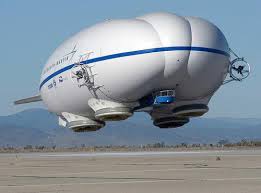
Breaking News
 LIVE ELECTION RESULTS: New York mayor, NJ & VA governor, Prop 50, Trump endorsements, latest vote
LIVE ELECTION RESULTS: New York mayor, NJ & VA governor, Prop 50, Trump endorsements, latest vote
 Sen. Markwayne Mullin Reveals Schumer Held Secret BACKROOM MEETING...
Sen. Markwayne Mullin Reveals Schumer Held Secret BACKROOM MEETING...
 RIP NYC - Muslim Communist Zohran Mamdani Wins New York City Mayoral Race
RIP NYC - Muslim Communist Zohran Mamdani Wins New York City Mayoral Race
 Dramatic Footage Shows UPS Cargo Jet Crashing At Louisville Airport
Dramatic Footage Shows UPS Cargo Jet Crashing At Louisville Airport
Top Tech News
 Japan just injected artificial blood into a human. No blood type needed. No refrigeration.
Japan just injected artificial blood into a human. No blood type needed. No refrigeration.
 The 6 Best LLM Tools To Run Models Locally
The 6 Best LLM Tools To Run Models Locally
 Testing My First Sodium-Ion Solar Battery
Testing My First Sodium-Ion Solar Battery
 A man once paralyzed from the waist down now stands on his own, not with machines or wires,...
A man once paralyzed from the waist down now stands on his own, not with machines or wires,...
 Review: Thumb-sized thermal camera turns your phone into a smart tool
Review: Thumb-sized thermal camera turns your phone into a smart tool
 Army To Bring Nuclear Microreactors To Its Bases By 2028
Army To Bring Nuclear Microreactors To Its Bases By 2028
 Nissan Says It's On Track For Solid-State Batteries That Double EV Range By 2028
Nissan Says It's On Track For Solid-State Batteries That Double EV Range By 2028
 Carbon based computers that run on iron
Carbon based computers that run on iron
 Russia flies strategic cruise missile propelled by a nuclear engine
Russia flies strategic cruise missile propelled by a nuclear engine
 100% Free AC & Heat from SOLAR! Airspool Mini Split AC from Santan Solar | Unboxing & Install
100% Free AC & Heat from SOLAR! Airspool Mini Split AC from Santan Solar | Unboxing & Install
Lockheed's Hybrid Airship Is Part Blimp, Part Hovercraft, No Hot Air

The rebirth of the airship is the perennial Next Big Thing in aviation. Of course, any talk of reviving the genre that never quite rose to meet its proponents' lofty expectations comes with the inevitable wisecracks about the Hindenburg.
Now, Lockheed Martin thinks it can make people stop laughing with its Hybrid Airship, a new sort of aircraft that combines the upsides of the airship with the abilities of a hovercraft.
OK, maybe they'll laugh a little—it looks like it pissed off a swarm of bees—but the Hybrid Airship is nevertheless coasting into reality after decades of development within Lockheed's secretive Skunk Works division in Palmdale, California.
The program is one of just two large airship efforts in the world close to fruition; the other is Hybrid Air Vehicles' Airlander 10, aka The Flying Bum. A one-third scale version of Lockheed's ship took off nearly eight years ago, and the venerable defense contractor is now three years from rolling out a production version.
When it does, the 300-foot-long, three-chamber, helium-filled airship will act like a hovercraft while maneuvering on the ground, without the need for a proper runway or even fully smoothed surfaces. Once airborne, it will haul 20 tons of cargo—vehicles, mining equipment, military gear, disaster-relief supplies—at speeds up to 70 mph, staying aloft a week at a time.
It promises to be more efficient, in terms of both fuel use and operating cost, than any land-, sea-, or air-based cargo system, allowing operators to reach remote areas without the infrastructure large planes and ships demand.
"We have had to overcome a lot of preconceived notions," says Lockheed program manager Bob Boyd, who defends the oft-maligned aircraft. "Airships were a big part of the war effort, mostly in aerial defense and in finding and sinking submarines. But then they languished as advertising vehicles for Goodyear and MetLife."
Granted, but that doesn't make them economically viable in the 21st century. "For cargo, the airship needs to be positioned between faster—i.e., via conventional aircraft—and cheaper, as it is with ships," says Richard Aboulafia, an aviation analyst with the Teal Group.
Conventional blimps can't carry loads large enough to make them truly useful. And because cargo airships are usually one-way haulers, the economics don't work out. "The track record of this concept is discouraging, at best," Aboulafia says.



